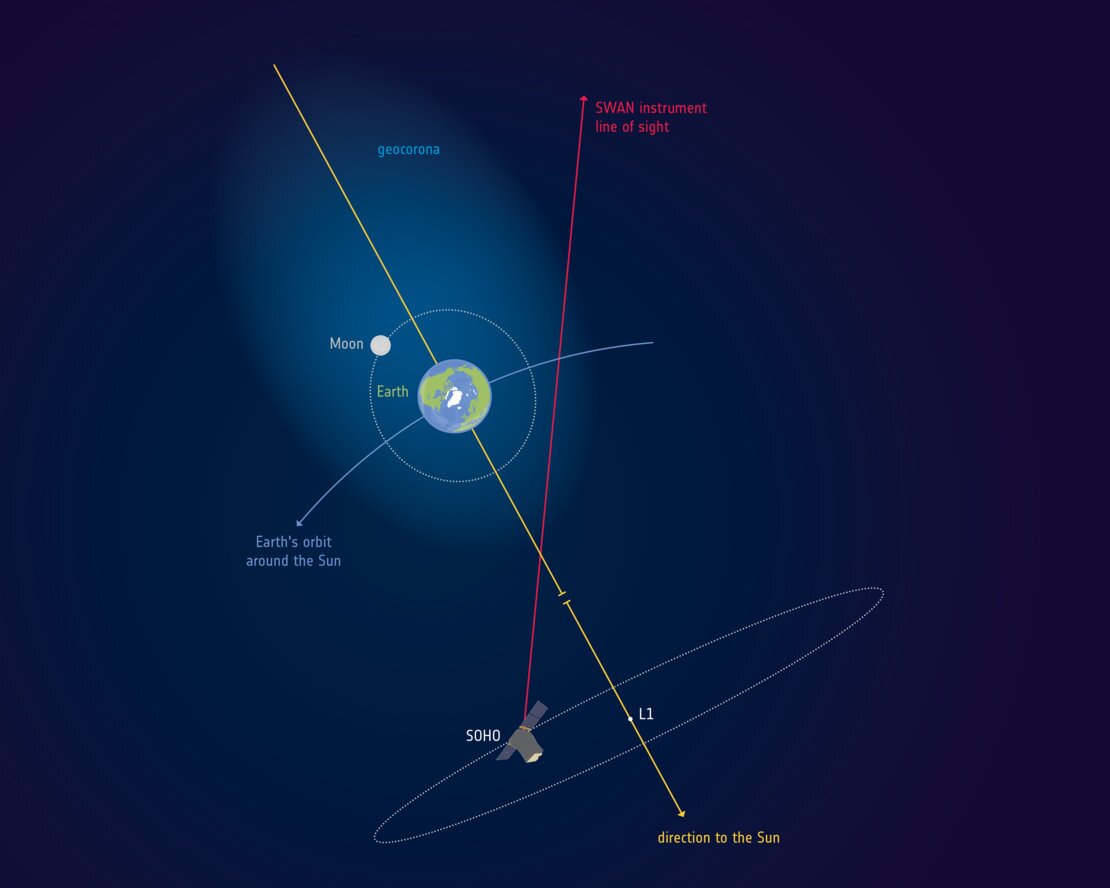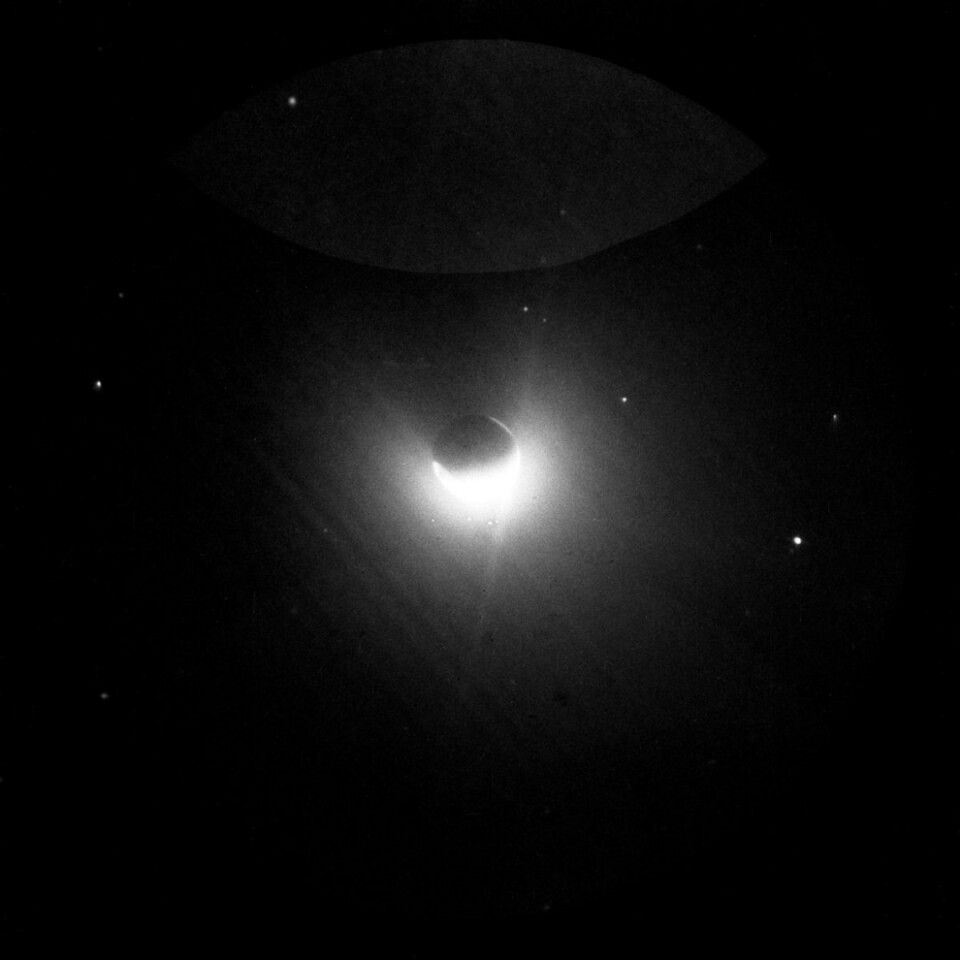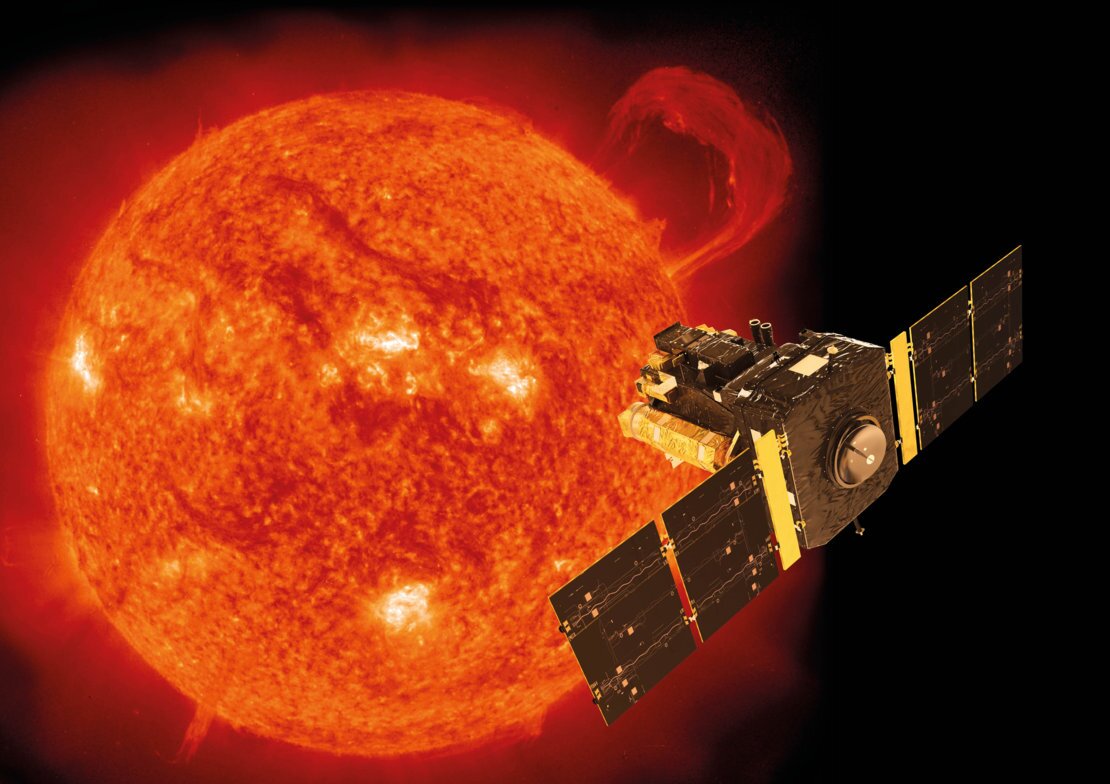Most people think that the Earth's atmosphere stops a bit over 62 miles (100 km) from the surface, but a new study based on observations made over two decades ago by the joint US-European Solar and Heliospheric Observatory (SOHO) satellite shows that it actually extends as far 391,000 miles (630,000 km) or 50 times the Earth's diameter. This makes the Moon a very high altitude aircraft.
It's often very hard to figure out where one thing ends and another begins in space. On Earth, such limits seem very obvious. The sea ends at the shore, the ground ends at the peak of the tallest mountain, and the atmosphere ends where it becomes a vacuum – at least, that's the idea.

The thing is, when one moves into the realm of outer space, it's often less about where one thing ends and another begins and more where one set of forces ceases to dominate over the other. Case in point is the Earth's atmosphere. Being made up of gas, it tends to expand to fill whatever space its in, and space is one great, big infinite void. The Earth's gravity keeps most of the air around our planet where it should be, but the outer layers of the atmosphere don't stop so much as peter out.
This is the reason why satellites fall out of orbit. Hundreds of miles up, it is to all intents and purposes a hard vacuum, but there are still enough air molecules to generate drag on a satellite, slowing it down until it plunges into the lower layers and burns up. But how far out does the atmosphere actually go?
Launched on December 2, 1995 atop an Atlas IIAS launcher from Cape Canaveral Air Force Station in Florida, SOHO is parked in the first Lagrange point (L1) 930,000 miles (1.5 million km) from Earth where it has carried out studies of the Sun and the solar winds, and will continue to do so until at least 2020. From this vantage point, the observatory's Solar Wind Anisotropie (SWAN) instrument is able to measure the presence of hydrogen by looking at the Lyman-alpha line in the solar spectrum. And what works for the Sun, works for Earth.

By turning SWAN on the Earth at the right times of the year, SOHO was able to detect hydrogen atoms from the atmosphere and measure how far out they extend into what space scientists call the geocorona. While the existence of the geocorona is well known – the telescope set up by the Apollo 16 astronauts on the Moon even photographed it – no one was sure how far out it reaches until now.
By looking at data collected by SOHO in the mid 1990s, scientists from Russia's Space Research Institute and elsewhere were able to work out the extent and density of the geocorona. What they found was that sunlight on the day side of the Earth compresses the hydrogen until it reaches a density of 70 atoms per cubic cm at an altitude of 37,000 miles (60,000 km), and on the night side it can expand out until it has a density of only 0.2 atoms per cubic cm at the distance of the Moon's orbit.

According to the study leader Igor Baliukin, the geocorona is so tenuous that it poses no hazard to astronauts or spacecraft. There are too few atoms and even the ultraviolet radiation associated to the geocorona is too low to be of any consequence. However, it is enough to interfere with more sensitive astronomical observations working in the ultraviolet band of the spectrum.
Jean-Loup Bertaux, former principal investigator of SWAN, also points out that if the geocorona is typical of Earthlike planets, then this new knowledge could be useful when looking for signs of a water on worlds outside our Solar System.
Source: ESA









